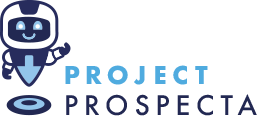Once your Project Prospecta campaign goes live you will start to receive construction lead notifications in your email inbox.
These notifications are triggered when contacts meet your qualifying engagement score and are ready to be contacted. Now, you have their information sitting in front of you. Phone, email, project information. What’s your next play?
Email or phone call? What will you say?
Having a playbook means you know exactly what to do.
video overview
Here are 3 steps for your first call to your construction leads. First, make a connect call, introduce your company with a focus on the benefit to the customer, and identify the opportunity.
1. Making the Connect Call
The most important step is to make a connect call. This is a quick conversation to qualify the lead and see if it’s worth have a further conversation.
And here is one important thing to note about following up your Project Prospecta leads: don’t send another email. They have already received emails from Project Prospecta on your behalf. They have engaged with the content of the emails. They did not respond. So don’t send another email.
The connect call’s objective is to meet them half-way, and reach out to them on the phone, to see if they need any more information. Often, this simple call is enough to get someone to engage with you.
Keep in mind that this lead has shown interest. The notification you received is sent as a response to their activity on your website. If you’ve received a notification, it means that the lead has recently visited your website and researched your business. This is the moment they will be most open to speaking.
However, research shows that few leads get followed up with immediately. In fact, the average response time, according to Hubspot, is 46 hours and 53 minutes. Nearly two days. However if you contact them within 5 minutes of the lead notification, you increase your likelihood of contact by 10x.
Here’s a good way to start the conversation:
The opener
Hi this is [YOUR NAME] from [YOUR COMPANY].
[Pause until they respond. This establishes the call as a conversation. Not a pitch.]
Thanks for picking up the phone. [This starts the conversation on a positive note]
I sent you an email recently, I was just calling to ask if you found it helpful?
[You know they have engaged with the email and your website, but don’t mention this]
After you’ve established who you are and the reason for your call, the prospect will probably be wondering who you are and what you do. Now it is important to give them a good introduction to your company so they understand the context and potential benefit of your conversation with them.
2. Introduce Your Company with a Focus on the Benefit to the Customer
It’s easy to start talking about our company and the products and solutions we offer. However, the beginning of the conversation is not the right time for that. Instead, introduce yourself briefly with a focus on the benefit to the customer.
The Intro
We help companies like yours
With the problem of (x)
So that they can achieve (y)
Does that sound like you?
For a radiator company speaking to an architect this might sound like:
“We help estate managers who are looking to specify durable, low-surface-temperature radiators find and fit the right product to keep vulnerable people safe in hospital and care home environments. Does that sound like you?”
3. Identifying the Opportunity
What if the person you are speaking to is not the right person, or the project has ended? These conversations still represent an opportunity. If the person you are speaking to works for a company who you can help, then the goal should be to make the most of this conversation. Whether it results in an order or specification now, or not. It might lead to a win a year from now. Or 5 years from now.
Wrong person
If the person you are speaking to is not the particular role you deal with, it is still worth having a conversation with them. You can use this opportunity to hear from them and understand more about their company and the projects they’re working on. Then when you do speak to the right person you can tell them that you’ve spoken to other people in the business. Also, the more people have heard of you in the business the easier it will be to get buy in from other members of the team.
Right person, wrong project
Perhaps you call and the project is not quite at the right stage. The estimator has finished and it’s on to the quantity surveyor. Or the products have already been specified. Or the development is almost finished. Do you hang up? Why not spend the time to have a conversation about their business challenges? Then ask if they have work coming down the pipeline they will need help with. Put a note in your diary to follow up with them in the future.
With such long sales cycles in construction, quick wins are rare. More common are long-term relationships that start with a simple call. If an architect, for example, specifies you once, they have an very high likelihood of specifying you consistently over the course of their career. They don’t want to have to research new building products for every project. If you set up a CPD, they may not be in a position to make decisions about specifications for another 5 years. However, that specification starts now.
Connect now. Get specified later.
Right role, right project
This is what you’re looking for. Now you have an opportunity to be added to a tender list, submit a quote, or set up a discovery call.
If you’re simply looking for the opportunity to be added to a tender list this conversation might be short and transactional. However, if you’re looking to supply a quote, discuss a project in-depth, or are introducing a new product, then you should set up a discovery call.
Why set up another call? Then you can identify a mutually convenient time and have already obtained a small “yes” from your prospect, even if it’s only to accept another meeting.
In this call you will
- Find out whether your contact specifies this type of product
- Identify whether they are in charge of specification or are part of a committee
- Which projects they have coming up that may requires this type of product
- What drives their decision-making process? Budget, or technical specification and performance? And in which priority?
- What challenges do they face when working with products/services like yours?
- Would a CPD be of use? What information would be helpful?
(For a helpful list of discovery call questions take a look at this HubSpot article: 6 Short But Powerful Questions to Ask on Sales Discovery Calls)
This connect call has then been transitioned to a quality meeting booked. Congrats!
Conclusion
Having a playbook is helpful because it eliminates the need to make up a new opening line each time, you can call more quickly, and be more confident. That confidence comes across. And the speed of your connect call makes all the difference.
If you call warm leads consistently, new work and new business are only a few phone calls away! Keep it up.
We’d love to know how your connect calls go. Send us an email at: pepe@projectprospecta.com.



